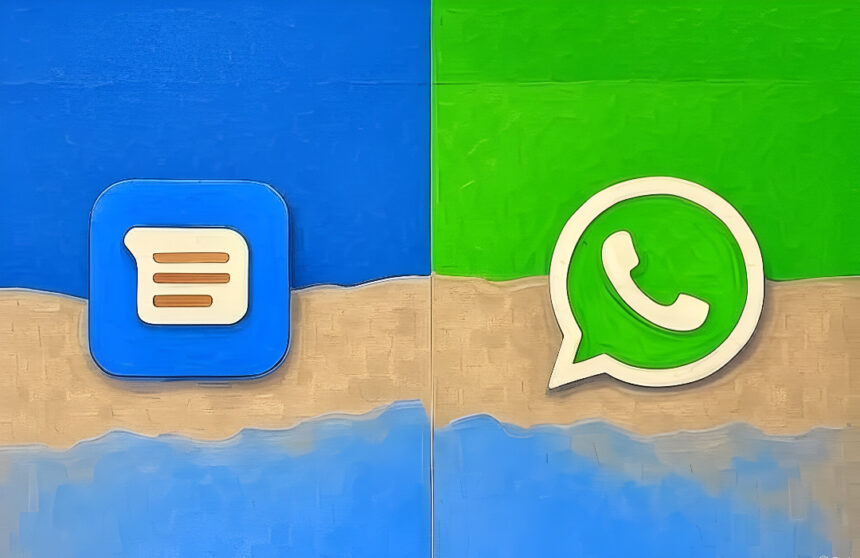Google is developing a feature that would allow real-time location sharing from its Messages app, in a similar way to one of WhatsApp’s most highly valued features. The addition is part of the company’s ongoing effort to modernise its SMS platform.
According to Android Authority, which found lines of code indicating the development of this tool, live location sharing will be possible and is currently only available in the beta version of the app.
How will real-time location sharing work in Google Messages?
The new feature was discovered through an analysis of the most recent beta version of Google Messages, where a line of code suggests the addition of a shortcut for sharing real-time location. Although it’s not yet active, the fact that it’s present in the beta indicates that Google is already working on this feature.
Currently, users can send their location using the “+” button within an in-app chat, then select the “Location” option to share a Google Maps link. This link shows a static position. The main difference with the new feature is that a continuous location stream can be sent, useful for in-person meetings or rides, similar to what WhatsApp already allows.
The feature aims to overcome the limitation of sending a single fixed location. When the location is shared in real time, the recipient will be able to track the user’s movement from their device, without the need for manual updates. This would allow the user’s route to be tracked in real time until they reach their destination.
There is no information yet on how this feature would be technically implemented in an app based on the SMS protocol, although there is speculation that it could be integrated into the RCS (Rich Communication Services) messaging system experience, which already includes end-to-end encryption.
Google is also expected to offer control over the duration of location sharing, an feature also available on WhatsApp.
How this tool works on WhatsApp?
On WhatsApp, the real-time location sharing feature is available for both individual and group chats. Users can choose how long they want to share their location—options include 15 minutes, 1 hour, or 8 hours—and can stop sharing at any time.
Once this period ends, the shared location becomes a static thumbnail showing the last recorded position, visible to the message recipients.
To activate it, tap the attachment icon within the chat, select “Location,” and then “Real-time Location.” If this is the first time you’ve used it, WhatsApp will request location permissions from the operating system. On Android, you can grant them from:
Settings > Apps > WhatsApp > Permissions > Location,
with options like “Allow only when the app is running” or “Always ask.”
The feature is also end-to-end encrypted. This means that not even WhatsApp can access the shared location, only the contacts selected by the user can see it. This promise of privacy has been one of the pillars that has kept the tool a favorite in emergency situations, everyday logistics, or social gatherings.
How will location sharing differ in Google Messages and WhatsApp?
The main difference between the two proposals lies in their technological architecture. WhatsApp is a mobile data or Wi-Fi-based platform, while Google Messages is based on SMS, with complementary support from the RCS system for advanced features such as encryption, multimedia, and read notifications. This could lead to certain technical or coverage limitations, especially if the system isn’t fully integrated with all carriers.
On the other hand, Google is expected to match WhatsApp’s privacy standards, including end-to-end encryption in the new feature.





